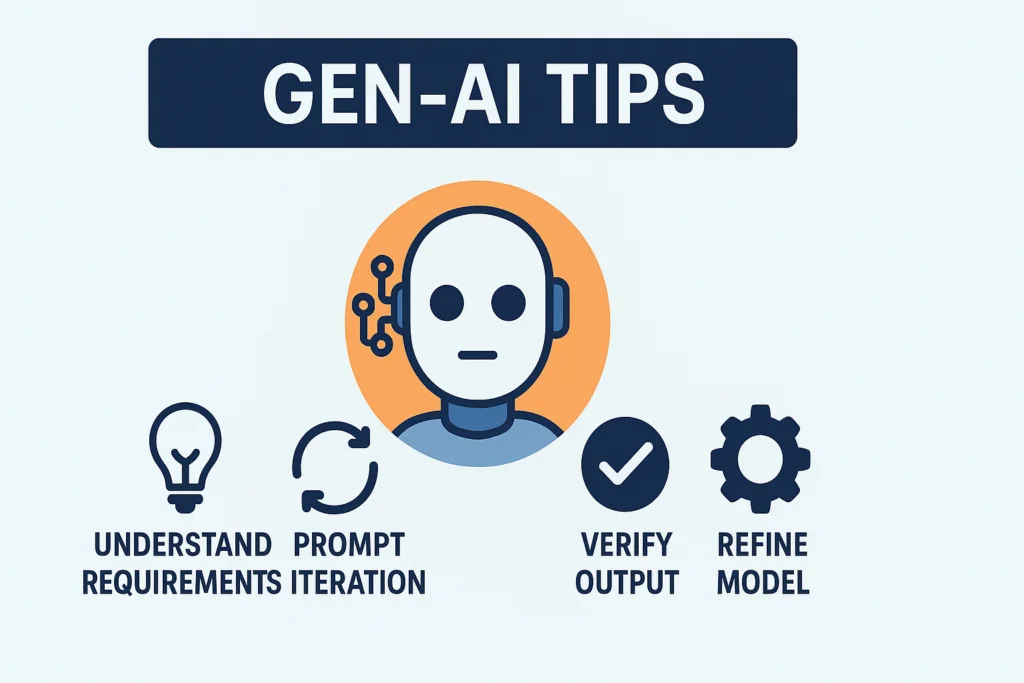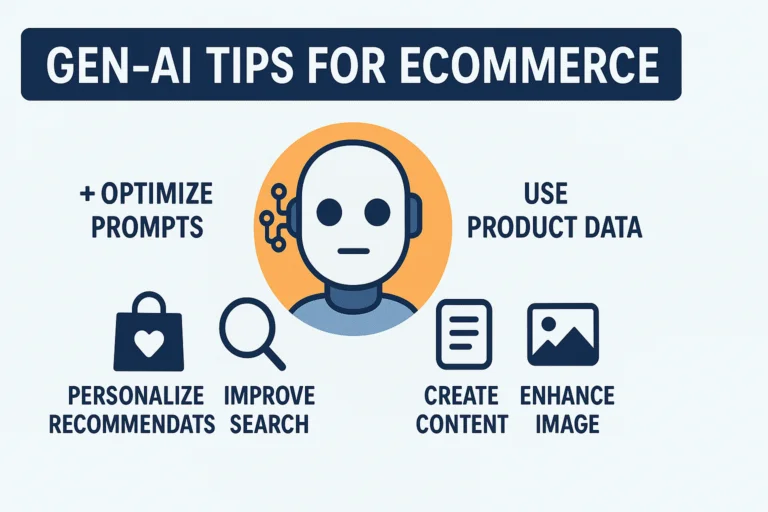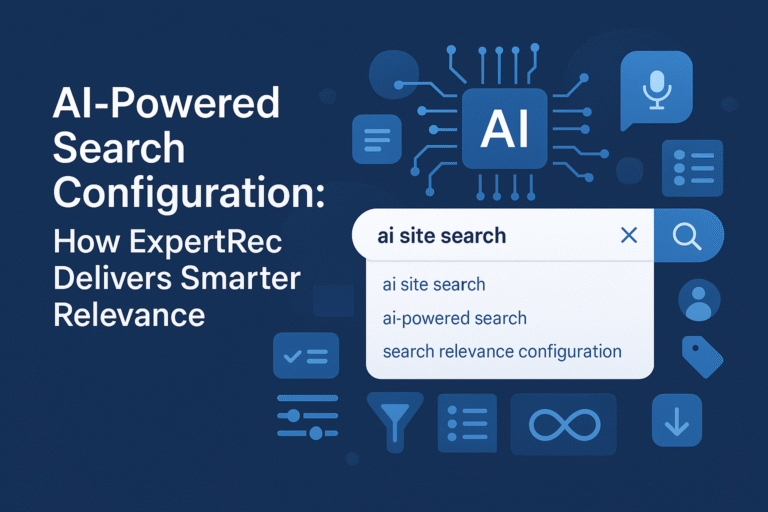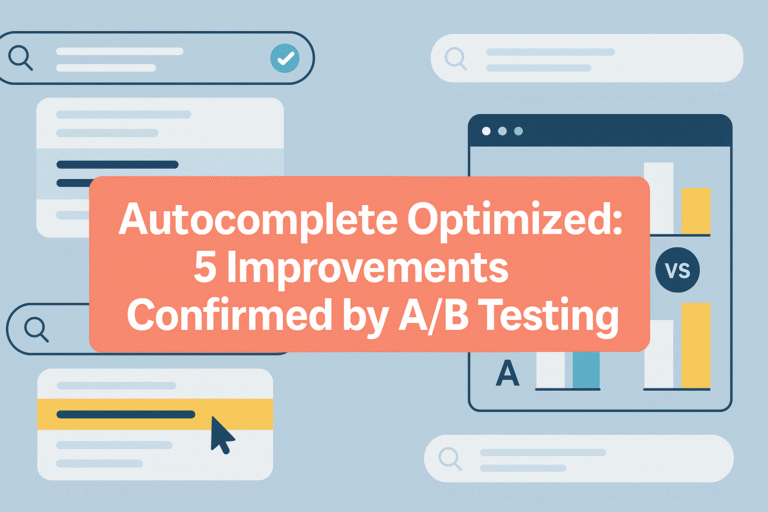Generative AI is transforming the digital landscape by enabling more natural, intelligent, and interactive user experiences. From AI-powered chat interfaces to dynamic search suggestions and product discovery, generative AI (Gen-AI) is becoming a core part of enterprise-level search strategies.
In this blog, we’ll dive into practical Gen-AI tips that help businesses elevate their search functionality and self-service experience. Whether you’re running an ecommerce site, a SaaS portal, or a digital knowledge base, integrating Gen-AI can offer massive advantages in terms of engagement, relevance, and conversions.
But is Gen-AI always worth implementing? Are there more cost-effective or scalable alternatives for specific use cases? And how does a platform like Expertrec simplify this process for growing businesses and global enterprises?
Let’s break it down.

What Is Gen-AI in the Context of Search and Discovery?
Gen-AI refers to the use of generative artificial intelligence models—such as large language models (LLMs)—to:
- Generate intelligent responses in natural language
- Summarize content dynamically
- Interpret user intent from complex queries
- Offer conversational interfaces (chatbots, voice search, etc.)
- Personalize results based on context and prior behavior
This is especially useful in domains where traditional keyword-based search falls short, such as:
- Complex product catalogs with sparse metadata
- Long-form content (knowledge bases, documentation, blogs)
- Multi-intent or ambiguous queries
- Personalized discovery needs
Top Gen-AI Tips for Smarter Search Implementation
1. Use AI Summarization for Rich Snippets
Deploy Gen-AI to generate content summaries for search results. This improves click-through rates and enhances user understanding. Instead of static metadata, LLMs can create real-time descriptions based on search intent.
2. Deploy Conversational Search Interfaces
Traditional search boxes are being replaced with chat-style interfaces. Integrate LLMs with retrieval-augmented generation (RAG) to answer queries in natural language using your private content base.
3. Optimize for Long-Tail and Natural Language Queries
Fine-tune your search models using logs of natural queries. Gen-AI enables semantic parsing of vague or verbose questions, drastically improving query interpretation.
4. Integrate Real-Time Personalization
Use Gen-AI to personalize search results and product recommendations based on the user’s prior actions, location, preferences, and intent.
5. Incorporate Feedback Loops into Ranking Models
Allow Gen-AI models to learn from user interaction signals (clicks, dwell time, refinements) and adjust the ranking model accordingly using reinforcement learning techniques.
6. Maintain Prompt Engineering Discipline
Gen-AI output is heavily dependent on the prompts fed into the model. Structure your prompt templates clearly and tailor them to the domain (e.g., ecommerce, documentation, etc.) for best results.
Is It Worth Implementing Gen-AI Across the Stack?
Yes—but with caution.
While Gen-AI opens up significant opportunities for improved discovery, it also comes with trade-offs:
Pros:
- Enhanced user engagement via conversational experiences
- Better handling of vague and multi-intent queries
- Dynamic content generation and summarization
- Multilingual support with zero additional effort
- Improved personalization and recommendations
Cons:
- Higher infrastructure costs (especially for transformer-based models)
- Complexity in integrating with structured search indexes
- Risk of hallucinated outputs (unverified AI responses)
- Data governance, privacy, and compliance concerns
- Needs continual monitoring and fine-tuning
So, for many organizations, the question isn’t whether to use Gen-AI, but how to integrate it efficiently and securely—without breaking the bank or compromising UX.
Evaluating Alternatives: Gen-AI vs Traditional/Narrow AI Approaches
Traditional Search Systems
- Strengths: Stable, cost-efficient, transparent
- Weaknesses: Limited understanding of user intent, poor natural language support
Hybrid Search with Semantic + Gen-AI Layer
- Strengths: Best of both worlds—precision + personalization
- Weaknesses: Requires strong orchestration and relevance tuning
Full Gen-AI Systems
- Strengths: Highly conversational, powerful summarization, open-ended query handling
- Weaknesses: Expensive, often lacks domain-specific context without grounding
Ultimately, hybrid Gen-AI systems are proving most effective—combining classical relevance models with the adaptability of LLMs.
How Expertrec Helps You Implement Gen-AI Efficiently
This is where Expertrec stands out as a practical, scalable, and secure solution for Gen-AI-powered search and discovery.
1. Retrieval-Augmented Generation (RAG) Support
Expertrec integrates Gen-AI with structured search indexes. Instead of hallucinating, responses are grounded in real data—product listings, documents, support content—via vector embeddings and semantic search.
2. Custom Prompt and Context Management
You can configure prompts, control generation parameters, and even set thresholds for fallback to keyword or vector-based results.
3. Secure On-Premise or Private Cloud Hosting
Expertrec ensures data compliance and privacy, supporting enterprise-grade deployment models with full encryption, access control, and audit logs.
4. Real-Time Index Sync with AI Layer
Expertrec allows live synchronization between your product/content data and the AI model’s memory layer—so the generated content always reflects the latest updates.
5. Pre-Built Chat Interfaces + APIs
Whether you want to launch a chatbot, integrate AI summaries into search results, or offer voice queries—Expertrec provides SDKs, REST APIs, and drag-and-drop UI tools to accelerate go-to-market.
Final Thoughts: Gen-AI Is the Future
Implementing Gen-AI in search doesn’t have to be risky or cost-prohibitive. With the right architecture and tools, you can deliver highly engaging, intelligent user experiences without sacrificing speed, control, or accuracy.
Expertrec bridges the gap between traditional search reliability and Gen-AI innovation—offering a best-in-class platform that global enterprises trust.
Whether you’re building a next-gen ecommerce search, a multilingual help center, or a product discovery engine, Expertrec empowers you with secure, smart, and scalable AI capabilities.
FAQs: Gen-AI Tips for Better Search and Discovery
Generative AI in search refers to using language models to generate intelligent answers, summaries, or recommendations based on user queries and indexed content.
2. How is Gen-AI different from traditional search?
Traditional search matches keywords, while Gen-AI understands user intent and generates responses in natural language, enabling a more conversational and intuitive experience.
3. Can Gen-AI be used for ecommerce product discovery?
Yes. Gen-AI can personalize results, generate product summaries, and answer user questions to guide them toward relevant products faster.
4. What are the risks of using Gen-AI in customer-facing applications?
Risks include inaccurate (hallucinated) content, compliance issues, or over-reliance on unverified data. Grounding with your own data using platforms like Expertrec mitigates this.
5. Is Gen-AI scalable for large catalogs or enterprise search?
Yes, when implemented with proper vector indexing, prompt engineering, and infrastructure support—especially in hybrid models.
6. Why use Expertrec for Gen-AI implementation?
Expertrec offers grounded AI responses, full control over hosting and compliance, and easy integration with your structured content, making it ideal for enterprises.




